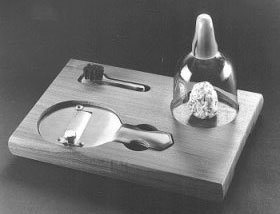Autumn turns to winter, and the courgettes give up the ghost. The big green leaves become covered in white powdery mildew, and the little fruits struggle to ripen to a reasonable size. Some are misshapen, some rot at the end. So I picked the last one, grabbed a couple of the yellow tomatoes and a large ripe Evergreen, plucked the remaining little Japanese aubergines, and made a ratatouille. Not a proper ratatouille, where you fry all the bits separately and then assemble the whole thing at the end, more a vegetable stew. Some garlic in olive oil, fry the sliced courgette until it's browning, then throw in the aubergines (being little, they need no chopping), and the chunks of tomato. Add as much basil as you can get from the pathetic stalks left in the garden, and stew for 30 minutes. Very nice indeed.
I can strongly recommend costata romanesco, cocozelle and goldrush courgettes. The romanesco plants are incredibly productive, and the baby marrows will turn into adults overnight if you're not careful. Fantastic flowers, too. The aubergines that work best in my garden are Japanese Long Toms. They don't get to the 17.5cm length they promise in the book, but they are prolific and tasty. This year's tomato discovery is Evergreen. Large, tasty and, yes, green. The prize for prolific production goes to the tomatillo. Incredible numbers of fruit from just a couple of plants. Will become a regular in the kitchen garden, I'm sure.

.jpg)


